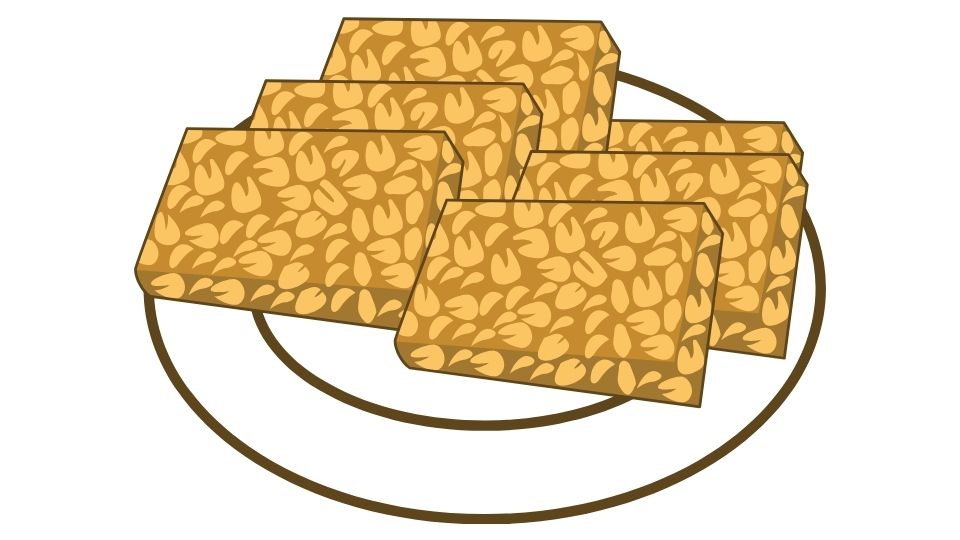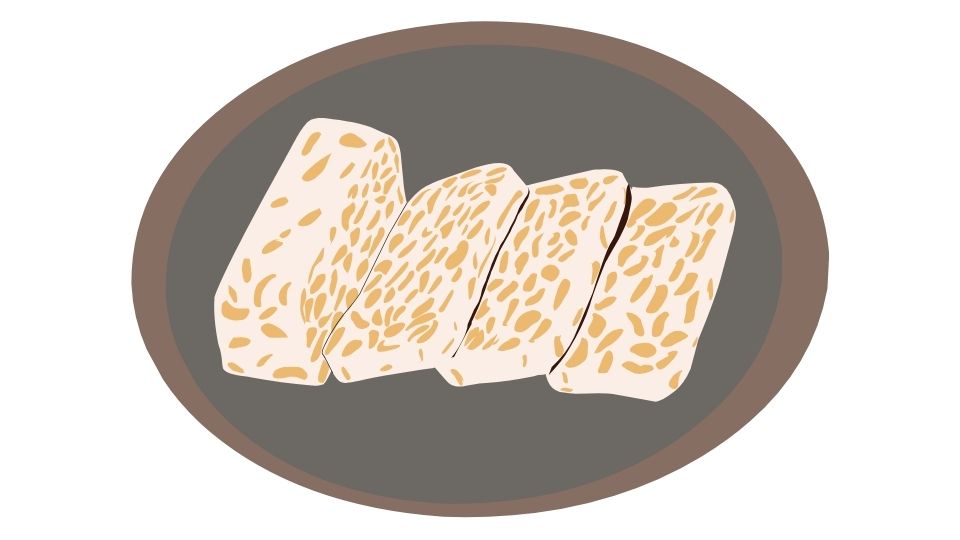Ever wondered if tempeh – that weird fermented soy block in the vegan section – is actually worth eating?
If you’re looking for plant-based protein sources that actually pack a punch, tempeh might be your new best friend.
A pound of tempeh contains about 85-110 grams of protein. That’s serious business for something that looks like bird seed stuck together.
But is tempeh actually good for you? And how does it compare to other protein sources? Let’s dive in.
Tempeh: The Protein Powerhouse You’re Probably Ignoring
Let me break down the numbers for you:
- Most tempeh contains about 19-24g of protein per 100g
- One pound equals roughly 454g
- Do the math and you get 86-109g protein per pound
Different brands and varieties might have slightly different numbers:
- Some sources say tempeh has about 24g protein per 4 ounces (~96g per pound)
- Others report 15g protein per 3 ounces (~81g per pound)
- The Cleveland Clinic says 18g protein per 3 ounces (~97g per pound)
- USDA data shows 20g protein per 100g (90g per pound)
So yeah, the short answer is: tempeh is loaded with protein.
What Even Is Tempeh And Why Should You Care?

If you’ve never heard of tempeh or have been too afraid to try it (I get it), here’s the deal:
Tempeh is fermented soybeans that have been pressed into a cake-like form. It originated in Indonesia and has been a staple protein source there for centuries.
The fermentation process is key – it’s what makes tempeh special compared to other soy products. When soybeans ferment with the Rhizopus mold (sounds gross, tastes great), magic happens:
- The beans become more digestible
- Nutrients become more bioavailable
- The protein quality improves
Unlike many plant proteins, tempeh is a complete protein source containing all nine essential amino acids your body needs but can’t produce on its own.
That’s why it’s popular among plant-based athletes and bodybuilders who need quality protein for muscle repair and growth.
Tempeh’s Nutritional Resume (Per 100g)
Tempeh isn’t just a protein one-trick pony. Here’s what else you get in a 100g serving:
- Calories: 160-192 kcal (not bad for the protein you’re getting)
- Fat: 4.5-11g (mostly the heart-healthy unsaturated kind)
- Carbs: 8-12g (lower than many plant proteins)
- Fiber: 4-8g (hello, gut health!)
- Micronutrients: Significant amounts of iron, calcium, magnesium, and B vitamins
So while you’re getting your protein fix, you’re also getting fiber for your gut, minerals for your bones, and B vitamins for energy production. Not a bad deal.
Tempeh vs. Tofu: The Soy Showdown
Let’s be honest – most people get tempeh and tofu confused. They’re both soy products, but they’re actually quite different:
| Food | Protein per 3oz serving |
|---|---|
| Tempeh | ~15-16g |
| Tofu | ~6-8g |
Tempeh has roughly twice the protein of tofu per serving. That’s because:
- Tempeh is made from whole fermented soybeans
- Tofu is made from processed soy milk that’s been coagulated
The texture difference is huge too. Tofu is soft and spongy (and bland unless you season it well), while tempeh has a firmer, meatier texture with a nutty flavor.
According to nutrition experts at Harvard, both are healthy choices, but tempeh edges out tofu in the nutrition department with more fiber, protein, and probiotics from fermentation.
How To Actually Use Tempeh In Real Life

So you’re convinced tempeh is worth trying. Now what?
Here are some easy ways to use tempeh:
- Slice and marinate it in soy sauce, maple syrup, and liquid smoke, then pan-fry for tempeh “bacon”
- Crumble it up to make a plant-based taco filling or bolognese sauce
- Cube and stir-fry it with vegetables for a quick protein boost
- Add to curry dishes for extra protein and texture
Pro tip: Steam tempeh for 10 minutes before cooking to remove any bitterness and help it absorb marinades better.
According to registered dietitians at the Academy of Nutrition and Dietetics, tempeh is incredibly versatile and can absorb almost any flavor you throw at it.
For The Macro-Counters And Fitness Freaks

If you’re tracking macros (I see you, fitness people), tempeh is a solid addition to your meal plan:
- It’s higher in protein and lower in carbs than many plant proteins
- The fat content is moderate and mostly healthy unsaturated fats
- It’s more satiating than many plant proteins due to its fiber content
For those who carefully monitor their nutrition, using an app like Cronometer can help you track tempeh’s contribution to your daily nutrients and ensure you’re hitting your protein targets.
The Bottom Line On Tempeh

One pound of tempeh gives you 85-110g of protein, making it one of the most protein-dense plant foods available.
It’s not just about the protein quantity though – tempeh offers:
- Complete amino acid profile
- Probiotic benefits from fermentation
- Excellent micronutrient content
- Decent fiber for gut health
Whether you’re vegan, vegetarian, or just looking to mix up your protein sources, tempeh deserves a spot in your kitchen rotation.
Next time you’re at the grocery store staring at that weird-looking block in the refrigerated section, grab it and give it a try. Your muscles (and probably your gut) will thank you.




Leave a Reply